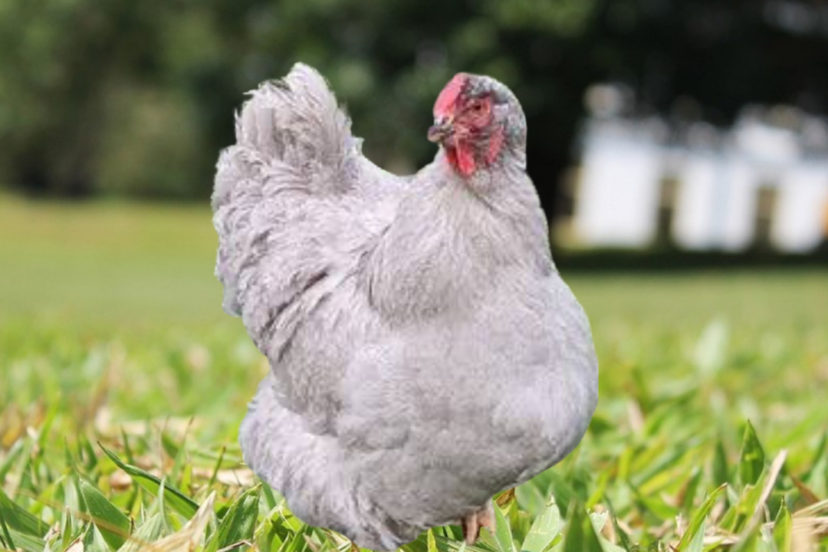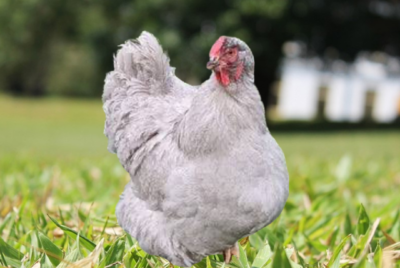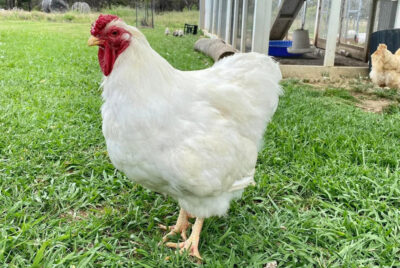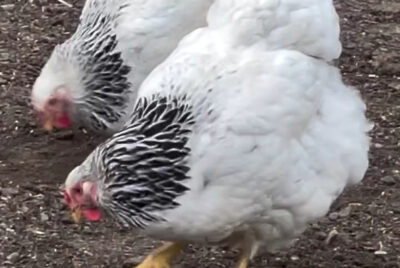Lavender Wyandotte Chickens – A Calm And Elegant Breed
Breed with a reputation for being calm and elegant, Lavender Wyandotte chickens are a beloved choice for poultry enthusiasts. Their striking lavender-colored feathers and gentle temperament make them a popular addition to any backyard flock. In this blog post, we will explore more about what makes these chickens special, from their unique appearance to their friendly nature.
Key Takeaways:
- Calming demeanor: Lavender Wyandotte chickens are known for their calm and gentle nature, making them great pets for families.
- Elegant appearance: These chickens have a striking lavender color with laced feathers, giving them a regal and elegant look.
- Cold-hardy: Lavender Wyandottes are able to withstand colder temperatures, making them a good choice for various climates.
- Good egg layers: They are prolific layers, providing a good number of medium-sized light brown eggs throughout the year.
- Dual-purpose breed: In addition to egg production, Lavender Wyandottes are also valued for their meat, making them a practical choice for homesteaders.
The Origin and History of Lavender Wyandotte Chickens
Even before the stunning Lavender Wyandotte chickens came into existence, there was a rich heritage behind their lineage. The Wyandotte breed itself originated in the United States in the late 19th century, named after the indigenous Wyandot people. Bred for their dual-purpose capabilities of egg production and meat, Wyandottes quickly gained popularity among poultry enthusiasts for their beauty and utility.
Tracing the Roots: From Heritage to Lavender Splendor
Origin: The Lavender variety of Wyandotte chickens can be traced back to the Blue variety, which was developed in the early 20th century. Through selective breeding, breeders aimed to create a chicken with a unique lavender-colored plumage that exuded elegance and charm. The Lavender Wyandotte is a testament to the dedication of breeders in enhancing the beauty of poultry while maintaining their practical qualities.
The Evolution of the Breed: Key Milestones
Splendor: A significant milestone in the evolution of Lavender Wyandotte chickens was the establishment of the Lavender variety in the American Poultry Association’s Standard of Perfection in 1977. This official recognition marked a pivotal moment for the breed, solidifying its status and paving the way for breeders to continue refining its characteristics. The Lavender Wyandotte’s unique coloration and gentle temperament have made it a favorite among poultry enthusiasts seeking a distinctive and docile addition to their flocks.
Recognizing a Lavender Wyandotte: Breed Characteristics
The Beauty of Lavender: Feathering and Color
If you’re looking to add a touch of elegance to your flock, the Lavender Wyandotte is the perfect choice. With their beautiful lavender or blue-grey plumage, they stand out among other chicken breeds. The soft, laced feathers on these birds create a stunning visual effect, making them a favorite among poultry enthusiasts.
Standard of Perfection: Size, Shape, and More
Recognizing a Lavender Wyandotte is easy once you know what to look for. These chickens are medium-sized birds with a curved and well-rounded shape. They have a wide back, full breast, and short legs, giving them a compact and sturdy appearance. The comb of a Lavender Wyandotte is rose-shaped, making it distinct from other breeds.
It’s important to adhere to the breed standards when selecting your Lavender Wyandottes. Ensuring that they meet the specified size, shape, and color requirements will not only maintain the breed’s integrity but also contribute to their overall health and well-being.
Behaviors and Temperament
The Calm Nature of Lavender Wyandottes
Not all chicken breeds are created equal when it comes to temperament, and Lavender Wyandotte chickens stand out for their exceptionally calm and gentle nature. These beautiful birds are known for their docile temperament, making them a fantastic choice for those looking for a peaceful addition to their flock. Whether you are a beginner or an experienced chicken keeper, you will appreciate the relaxed and easy-going demeanor of Lavender Wyandottes.
Integration into the Flock: Social Dynamics with Other Chickens
With their calm and friendly nature, Lavender Wyandottes typically integrate well into existing flocks. These chickens are not known to be aggressive or dominant, which can help prevent conflicts within the flock. The gentle and sociable characteristics of Lavender Wyandottes make them a great choice for mixed flocks, as they tend to get along well with other breeds.
The adaptable nature of Lavender Wyandottes also aids in their integration into the flock. They are quick to adjust to new surroundings and companions, reducing the likelihood of bullying or pecking order disputes. With proper introductions and a bit of time to acclimate, these lovely chickens usually become valued members of the group.
Caring for Your Lavender Wyandottes
Coop Essentials: Creating the Perfect Home
Unlike some other chicken breeds, Lavender Wyandottes are known for their calm and elegant demeanor. Pertaining to creating the perfect home for these beautiful birds, Lavender Wyandottes do well in a spacious coop with good ventilation and access to sunlight. Make sure their coop is predator-proof, as these chickens have a peaceful nature and may not defend themselves as aggressively as other breeds.
Nutrition and Health: Keeping Your Lavender Wyandottes Thriving
Perfect nutrition and health care are necessary for keeping your Lavender Wyandottes thriving. These chickens require a balanced diet of high-quality poultry feed, as well as access to fresh water at all times. Adding nutritious treats like vegetables and fruits can also help maintain their overall health.
Wyandottes are generally hardy birds, but like all chickens, they are susceptible to common poultry diseases. It’s crucial to observe your flock regularly and seek veterinary care at the first sign of illness. To ensure their well-being, provide your Lavender Wyandottes with a clean living environment and practice good biosecurity measures to prevent the spread of disease.
Breeding and Genetics
Understanding Lavender Wyandotte Genetics
Keep in mind that Lavender Wyandotte chickens are a result of a genetic mutation that causes their feathers to be a soft, pale shade of lavender. This unique color is controlled by a recessive gene, which means that both parents must carry the gene in order for the lavender color to be expressed in their offspring. Understanding the genetics behind Lavender Wyandottes can help breeders predict the outcome of their mating pairs and work towards enhancing desirable traits in the breed.
Tips for Successful Breeding
On the journey of breeding Lavender Wyandotte chickens, it is important to focus on selecting breeding pairs that carry the lavender gene to ensure the lavender color is present in the chicks. Additionally, paying attention to other important traits such as feather quality, size, and temperament can help produce healthy and well-rounded offspring. After all, genetics play a crucial role in determining the overall characteristics of the Lavender Wyandotte breed.
- Pair birds with desirable traits
- Monitor the health and development of chicks
- Select breeding pairs carefully After all, the goal is to improve the quality of the Lavender Wyandotte breed with each generation.
The Lavender Wyandotte in Shows and Competitions
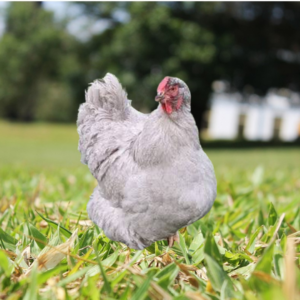
Preparing Your Bird for the Show Ring
Your Lavender Wyandotte chickens have the potential to shine in poultry shows and competitions. To prepare your bird for the show ring, it’s important to start by ensuring their feathers are clean, shiny, and free from any dirt or debris. Regularly grooming your chickens by gently washing and blow-drying their feathers can help maintain their presentation. Additionally, trimming their nails and beak can give them a polished look.
What Judges Look For: Standards and Awards
Any Lavender Wyandotte owner entering their bird into a competition knows the importance of understanding what judges look for. Judges typically evaluate a bird’s appearance, including its size, stance, color, and feather quality. The American Poultry Association sets specific standards for each breed, and birds are judged based on how closely they adhere to these standards. Winning birds are awarded based on their conformity to these guidelines.
Shows can be a rewarding experience for both you and your Lavender Wyandotte chickens. It’s a great opportunity to showcase the beauty and elegance of your birds, while also learning more about poultry standards and networking with other chicken enthusiasts. Be mindful of, each competition is a chance for your chickens to strut their stuff and demonstrate why they are a top breed choice for many chicken lovers.
Common Questions and Troubleshooting
Many new owners of Lavender Wyandotte chickens often have questions about caring for these beautiful birds. Here, we address some of the frequently asked queries to help you better understand and care for your flock.
Answers to Frequently Asked Queries from Owners
Questions: One common question that owners have is about the temperament of Lavender Wyandottes. These chickens are known for their gentle and calm nature, making them excellent choices for families with children or first-time chicken owners. They are also good layers of brown eggs, providing a practical bonus alongside their elegant appearance.
Overcoming Challenges: Common Issues and Solutions
Solutions: Like any chicken breed, Lavender Wyandottes may face some health issues or challenges. One common problem is dealing with external parasites like mites or lice. Regular coop cleaning, dust baths, and treating the chickens with appropriate products can help prevent and manage these pesky critters. Additionally, providing a balanced diet, ample fresh water, and a safe coop environment can address many health concerns.
Challenges: It’s vital to keep an eye out for any signs of illness or distress in your Lavender Wyandotte chickens. Being proactive and observing your flock daily can help you catch any issues early, ensuring the well-being of your birds. By providing proper care and attention, you can enjoy a harmonious relationship with these calm and elegant birds.
Conclusion
So, if you are looking for a chicken breed that is not only beautiful but also gentle and elegant, Lavender Wyandotte chickens are a fantastic choice. Their stunning lavender color, calm disposition, and fluffy appearance make them a wonderful addition to any backyard flock. Whether you are a beginner or experienced chicken owner, these birds are sure to bring joy and serenity to your homestead.
With their dual-purpose nature, Lavender Wyandottes are not only great egg layers but also make excellent meat birds. Their docile temperament and stunning appearance make them a popular choice among chicken enthusiasts. Consider adding these lovely birds to your flock and enjoy the many benefits they have to offer.
FAQ’s about Lavender Wyandottes.
Q: What are Lavender Wyandotte Chickens known for?
A: Lavender Wyandotte Chickens are known for being a calm and elegant breed of chickens.
Q: Are Lavender Wyandotte Chickens suitable for beginners?
A: Yes, Lavender Wyandotte Chickens are a great choice for beginners due to their friendly and non-aggressive nature.
Q: What color are Lavender Wyandotte Chickens?
A: Lavender Wyandotte Chickens have a beautiful silver-lavender plumage, which sets them apart from other breeds.
Q: Do Lavender Wyandotte Chickens do well in both free-range and confinement settings?
A: Yes, Lavender Wyandotte Chickens adapt well to both free-range and confinement settings, making them versatile for different environments.
Q: What is the average size of Lavender Wyandotte Chickens?
A: Lavender Wyandotte Chickens are a medium-sized breed, with hens weighing around 6-7 pounds and roosters weighing around 8-9 pounds.
You might also enjoy the elegant White Wyandotte.
